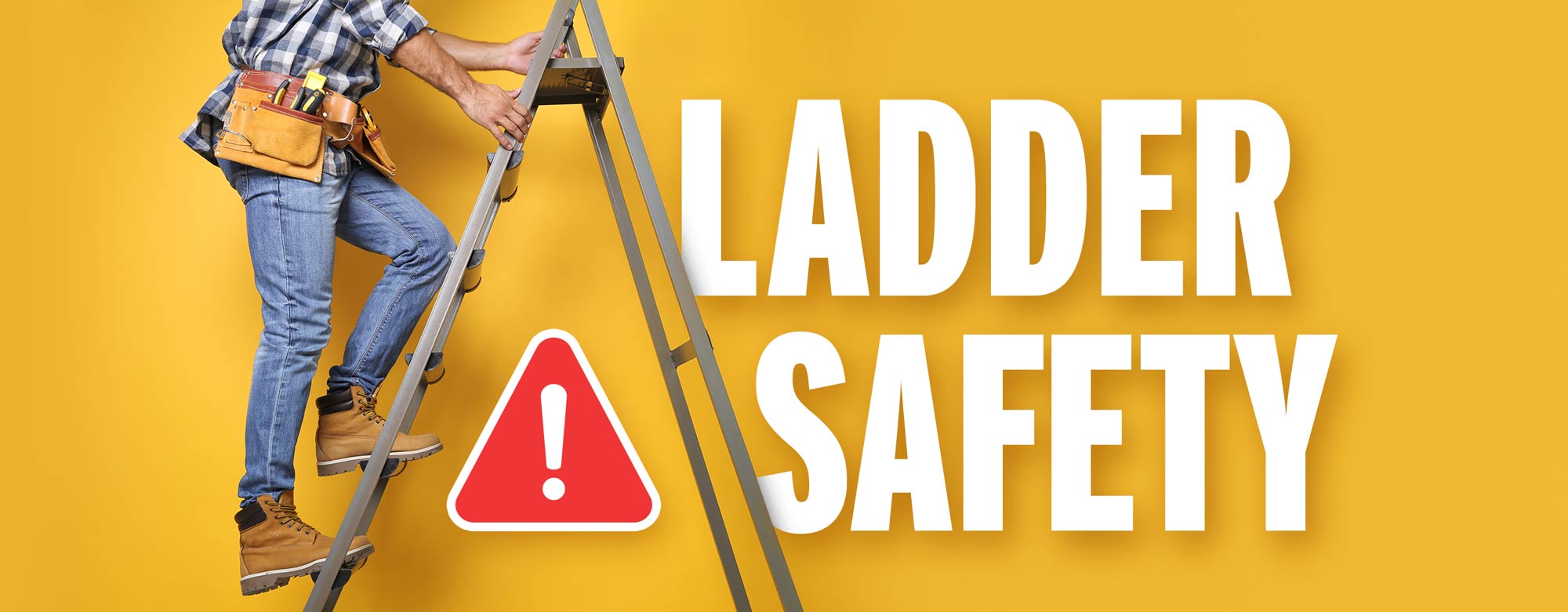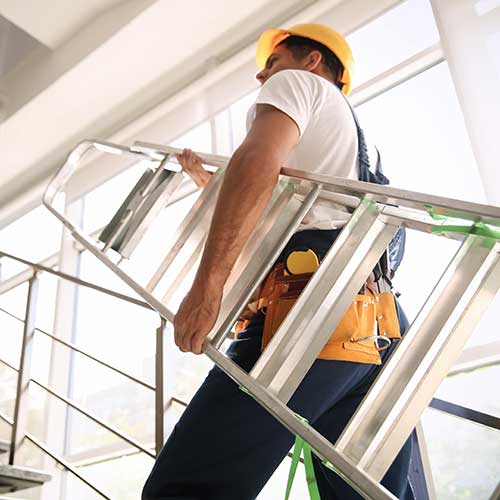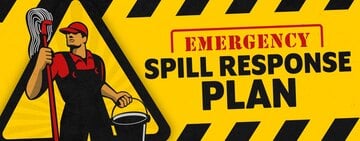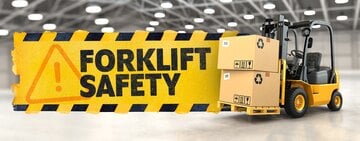
Ladders are a common tool used in industrial settings, making them an important part of warehouse safety. Ladder falls can lead to serious injuries and thousands of dollars in damages, creating a need for ladder safety training. Educating employees on how to safely set up, use, and store a ladder can lead to huge progress in making your industrial business a safer environment. If you’re looking to open a warehouse and want to learn more about how to safely use a ladder, check out our comprehensive guide on ladder safety.
Shop All Ladders and PlatformsOSHA Ladder Safety
The Occupational Safety and Health Administration, also referred to as OSHA, has a set list of guidelines that outline the basics of ladder safety. Ladder safety is one of the most commonly cited OSHA violations because ladders are frequently not up to code and employees are usually not adequately trained in ladder safety. OSHA outlines when it's safe to use a ladder, as well as what actions are safe and acceptable when climbing one. Here are some of OSHA’s most important guidelines to keep in mind when working with a ladder:
- Use ladders when necessary, rather than using an unsafe substitute such as boxes
- Keep ladders free of oil and other slippery substances
- Ladders can only be used for their designed purposes
- Ladders should only be used on even and clean surfaces
- Don’t load ladders past their intended workload or weight limit
- Use ladders in traffic-free environments, use barriers or other blockers to avoid displacement from traffic
Ladder Safety Rules

When using a ladder, there is a set list of safety rules that help ensure the risk of injury is minimized. Thousands of ladder injuries occur in workspaces every year, with the vast majority of them being caused by employees failing to follow basic ladder safety rules. Knowing the basic rules of ladder safety helps employees avoid accidents, keeping them safe. If your employees are using ladders at all, they should know the following safe and unsafe ladder practices:
Safe Ladder Practices
- Facing the ladder when climbing up or down
- Always using at least one hand to grip the ladder when climbing up or down
- Having another employee or staff member hold large ladders when climbing
- Maintaining three points of contact at all times
- Properly illuminating the work area to identify potential dangers
- Communicating defects and hazards when noticed so they can be repaired before future use
Unsafe Ladder Practices
- Moving or extending ladder while in use
- Carrying objects that can cause loss of balance when climbing
- Climbing a closed ladder
- Climbing a ladder while drunk or impaired
- Standing on top of a ladder, throwing it off balance
Ladder Safety Video
To learn how to safely use a ladder and minimize accidents, check out the video below for a step-by-step process on safe ladder usage:
Ladder Inspection
One of the most important aspects of ladder safety is the inspection of the ladder and the area around it before use. Ladder inspection is critical, as it allows workers to identify any problems or hazards that can lead to accidents or injuries. Without a proper inspection, these dangers could go unnoticed. When performing a ladder inspection, you should look out for the following items:
- Rungs - Rungs should be free of debris or loose items.
- Screws and Bolts - All screws and bolts on the ladder should be tight and secure.
- Hardware and Fittings - Hardware and fittings should be securely attached.
- Moveable Parts - Ladder extension locks should move freely and lock correctly.
- Readable Labels - Labels on the ladder should be readable, and the advice should be adhered to.
- Work Area - The work area should be inspected to ensure no surfaces or hazards will affect the ladder’s stability.
Ladder Safety Training

According to OSHA, every employee who routinely uses ladders or similar equipment must have some sort of ladder training educational course. For those employees with more specialized jobs that will frequently use ladders or will use ladders in dangerous environments, extensive ladder safety courses should be given. OSHA specifies that training should educate employees on how to safely set up and use ladders. In addition, your ladder safety training should enable employees to identify potential hazards, as well as how to eliminate them.
Back to Table of ContentsLadder Duty Rating
Ladders are made to hold a specific amount of weight, with each ladder being assigned a rating that shows how much a ladder can hold and its designed purpose. When trying to determine the amount of weight your ladder will be holding you need to calculate your total weight, the weight of your clothing and equipment, and the weight of tools and supplies you are carrying. Never go above your ladder’s weight limit because it can lead to an unbalanced ladder and cause falls. When trying to determine how much weight a ladder can hold, ladder duty ratings show as follows:
- Type III - Designed for lightweight use, usually holds around 200 lb.
- Type II - Perfect for medium-duty home projects, can hold up to 225 lb.
- Type I - Great for most projects and jobs, heavy-duty ladders that hold up to 250 lb.
- Type IA - Extra heavy-duty ladders designed for professional use, hold up to 300 lb.
- Type IAA - Extra-heavy-duty ladders used for the toughest jobs and projects, can hold up to 375 lb.
Ladder Fall Injuries
Falling from a ladder can lead to serious injuries, so employees need to know not only how to prevent ladder fall injuries, but how to respond to them as well. When working at height on tall ladders, be sure to use the proper fall protection equipment. When someone falls off a ladder, they should call for help and assess their injuries. To start, identify if the fall victim is in any pain. If so, seek medical attention immediately. Ladder falls can lead to injuries such as broken bones and concussions, so ensuring the fall victim’s health with a checkup is imperative.
How to Transport a Ladder

Incorrectly transporting and handling a ladder is dangerous, and workers can get injured if they’re not careful. Before transporting, the ladder should be closed. During transportation, a ladder should always be carried parallel to the ground, being held by the side rail. For ladders that exceed 20 feet, you should always have a second person help with transportation to mitigate the risk of injury.
Ladder Storage
Improperly storing a ladder can harm the structural integrity of the ladder and lead to injuries. Store your ladders in a clean, dark, and dry location. When storing a ladder, ensure that nothing nearby has the potential to corrode or damage the ladder. For added support, you may want to store your ladders horizontally on racks or brackets.
Back to Table of ContentsThere are several aspects of ladder safety that industrial employees need to understand. Ladders are frequently used in industrial settings, and employees must be educated on how to safely use them. Not only will ladder safety help reduce accidents and injuries, but it will also make your industrial setting more efficient. Every industrial business stands to benefit from improving ladder safety, creating a safer environment for all.





